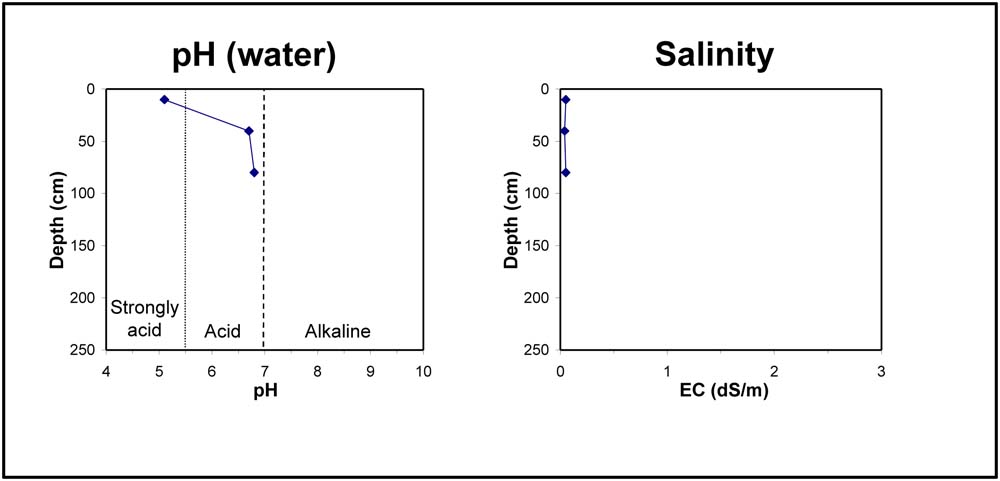MM121
| Site: MM121 | Land Unit: Lake Burrumbeet Basalt |
| Aust. Soil Class.: Bleached-Ferric, ?, Brown CHROMOSOL (confidence level 4) | |
The major occurrences of this unit is on the gently undulating basalt plains in the Mount Emu – Lake Burrumbeet area to the west of Ballarat, and the Meredith and Ballan areas. The dominant soils are Bleached-Ferric Brown Chromosols that occur in association with Bleached-Mottled Grey Chromosols, Kurosols and Sodosols. There are minor occurrences of Mottled Black and Mottled Yellow Chromosols with sporadic bleached A2 horizons. The dominant soils of the unit also occur on the mounds and in the depression of the gilgai areas. Other soils often found associated with gilgais are Black Chromosols, Mottled Yellow Chromosols with shallow surface horizons, and black cracking clays (Vertosols). A few surface stones may occur in these gilgai areas.
Site Description:
| Geology: Quaternary basalt | Landform pattern: Gently undulating plains |
| Position in landscape: Mid-slope | Internal drainage: Imperfectly drained |
Soil Profile Morphology
| A1 | 0-20 cm | Brown (10YR4/3) silty clay loam, massive structure, weak consistence when moderately moist, pH 5.1. Sharp transition to: |
| A2 | 20-40 cm | Pale brown (10YR6/3), silty clay loam, conspicuously bleached (10YR7/2), weak consistence when moderately moist, ferruginous nodules are abundant. Sharp transition to: |
| Subsoil | ||
| B21 | 40-80 cm | Yellowish brown (10YR5/6) medium clay, red mottles (2.5YR4/6), moderate blocky structure (5-10 mm), firm consistence when moderately moist, ferruginous nodules are abundant, pH 6.7. Gradual transition to: |
| B22 | 80+ cm | Yellowish brown (10YR5/6) medium clay, red mottles (2.5YR4/6), moderate blocky structure (10-20 mm), very firm consistence when moderately moist, pH 6.8. |
Key profile features:
- Strongly acidic topsoil
- Bleached A2 horizon
- Mottled subsoil



